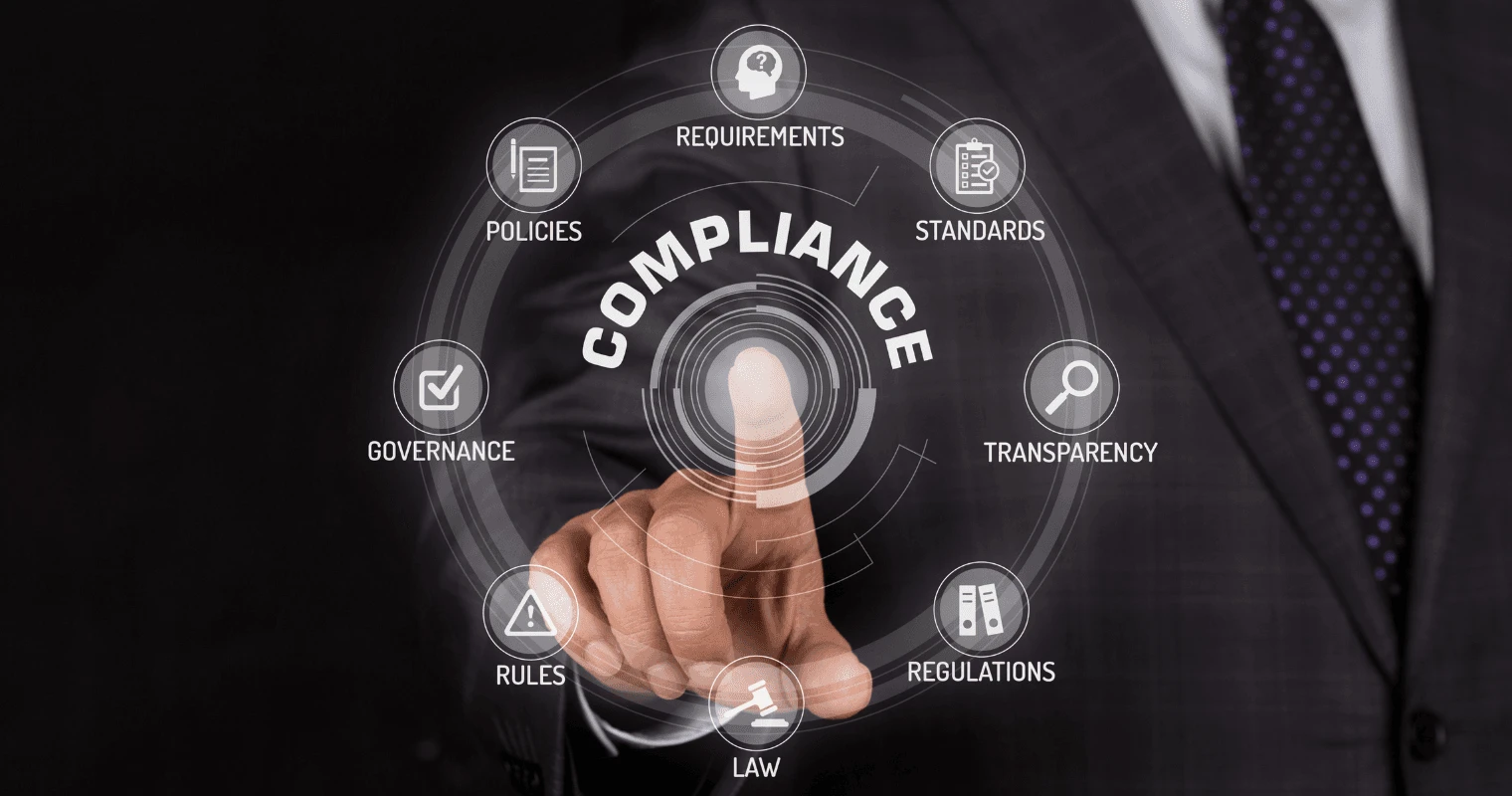The Crucial Role of Signature Capture in Healthcare and Pharmaceuticals

by Brian Fitzgerald | Last Updated: November 21, 2023 | 1 min read
In an increasingly digitized world, the healthcare and pharmaceutical industries have seen a significant transformation in the way they manage patient data, prescriptions, and regulatory compliance.
One of the key features that have emerged as vital in this evolving landscape is signature capture. This technology, which allows healthcare professionals (HCPs) and pharmaceutical personnel to capture electronic signatures, plays a pivotal role in ensuring the security, efficiency, and legality of various processes.
What is Digital Signature?
A digital signature is like a virtual fingerprint that ensures the authenticity and integrity of digital documents or messages. It acts as a secure stamp, confirming that the sender is who they claim to be and that the content hasn't been tampered with during transmission.
Just as we sign documents in the physical world, a digital signature serves the same purpose in the online realm. To create a digital signature, a unique algorithm generates a cryptographic key, unique to the signer. This key is applied to the document, creating a digital imprint that can be verified by anyone with the corresponding key.
Digital signatures play a crucial role in online security, safeguarding against fraud and unauthorized alterations. They are widely used in electronic transactions, legal contracts, and other digital communications to provide a trustworthy and reliable method of verification. Embracing digital signatures enhances the overall security and trustworthiness of our interconnected digital world.
In this article, we will delve into why the signature capture feature is so important to HCPs and the pharmaceutical sector.

Revolutionizing Healthcare and Pharma: The Power of Digital Signature Capture Technology
In healthcare and pharmaceuticals, compliance with stringent regulations is paramount. Regulations such as HIPAA (Health Insurance Portability and Accountability Act) and FDA (Food and Drug Administration) requirements dictate that electronic records and signatures must be equivalent to their paper counterparts in terms of authenticity and legal validity.
Signature capture technology ensures that electronic signatures are legally binding, protecting HCPs and pharmaceutical companies from potential litigation or regulatory penalties.
For healthcare professionals, this is particularly important when it comes to patient consent forms, treatment plans, and prescription orders.
These electronic signatures guarantee the integrity of these documents. This offers a secure and traceable way to confirm patients' consent and their understanding of the treatment provided.
Explore More Relevant Articles on P360
- The Art and Science of Omnichannel Marketing
- Why Pharmaceutical Companies Need to Prioritize Customer Experience (CX) Initiatives
- Say No to Apps, Portals and Logins for Effective Physician Engagement
- ZING Powers HCP Engagement With Intelligent Bots and QR Codes
- The ZING Engagement Suite Makes Scheduling with HCPs a Breeze
Enhanced Security through Signature Capture Technology
In an era where data breaches and identity theft are prevalent. Securing sensitive patient information and pharmaceutical data is of utmost importance. Traditional handwritten signatures on paper documents are susceptible to forgery and unauthorized access. Digital Signature capture technology adds a layer of security by requiring authentication before the signature is recorded.
For pharmaceutical companies, the security aspect is equally vital. Pharmaceutical research and development generate extensive intellectual property and proprietary data. Electronic signatures in this context safeguard these valuable assets from unauthorized access or tampering. Moreover, they help maintain a clear audit trail, making it easier to identify and track any security breaches or unauthorized access.
Streamlined Processes with Electronic Signature Capture
HCPs are continually striving to enhance patient care while maintaining administrative efficiency. Signature capture technology facilitates this objective by streamlining various administrative processes. Whether it's admitting a patient to a healthcare facility, prescribing medications, or documenting treatment plans. Electronic digital signatures reduce paperwork and save time. This eliminates the risk of documents getting lost or misfiled.
Pharmaceutical companies can also benefit from streamlined processes. From managing clinical trials to supply chain logistics, electronic signatures simplify approval workflows, reducing delays and enhancing operational efficiency. This translates into faster drug development and distribution, ultimately improving patient access to life-saving medications.
Improved Patient Experience with Electronic Signature
In healthcare, the patient experience is a crucial factor. Traditional paper-based processes can often lead to delays and frustration for patients. Electronic signature capture expedites the check-in process, reduces wait times, and enhances the overall experience for patients. Whether it's signing consent forms or verifying insurance information, patients appreciate the efficiency and convenience offered by electronic signature capture.
Data Accuracy in Healthcare and Pharmaceuticals
Human error is an inherent risk in manual processes. Illegible handwriting, incorrect dates, or missing signatures on paper documents can lead to errors in healthcare and pharmaceuticals.
Signature capture technology ensures data accuracy by enforcing consistency and eliminating the possibility of illegible handwriting. This accuracy is essential in healthcare to avoid medication errors, misdiagnoses, and treatment complications.
In pharmaceuticals, accurate data is essential for regulatory submissions, clinical trial data, and manufacturing processes. Any inaccuracies can lead to product recalls, regulatory setbacks, and reputational damage.
Electronic signature capture ensures that data is entered correctly, reducing the chances of costly errors.
Remote Accessibility in Healthcare and Pharma
The advent of telehealth and remote work in healthcare and pharmaceuticals has made electronic signature capture even more crucial. HCPs can consult with patients and capture their signatures remotely. This digital signature eliminates the need for in-person visits for routine administrative tasks.
In pharmaceuticals, remote signature capture allows professionals to collaborate on projects and approvals, regardless of their physical location.
Environmental Sustainability in Healthcare and Pharma
The healthcare and pharmaceutical industries generate a substantial amount of paperwork. Electronic signature capture technology aligns with sustainability goals by reducing paper consumption, ultimately leading to a positive environmental impact. The move towards a paperless environment not only reduces costs associated with printing and storage but also demonstrates a commitment to environmental responsibility.

The Different Types of Digital Signatures
In an increasingly digitized world, the process of signing documents has undergone a significant transformation. Traditional ink-on-paper signatures have given way to digital signatures, which offer convenience, security, and efficiency. Among digital signatures, two distinct categories have emerged: "dry" digital signatures and "wet" digital signatures. Understanding the key differences between these two types is essential for organizations and individuals who rely on digital signing processes.
Dry Digital Signatures:
A dry digital signature, also known as an electronic signature, is a digital representation of a person's handwritten signature. It is created using various electronic devices such as stylus-enabled touch screens, graphics tablets, or even a mouse. The essential characteristics of dry digital signatures are as follows:
Digital Representation: A dry digital signature mimics a person's physical signature, often capturing the unique characteristics and style of their handwriting. It appears as an image or graphic within the document, providing a visual representation of the signer's intent.
Convenience and Speed: Dry digital signatures are convenient and speedy. They allow users to sign documents quickly without the need for printing, scanning, or faxing. This expedites document workflows and reduces administrative bottlenecks.
Legally Binding: In many countries, dry digital signatures are legally binding for various documents, including contracts, agreements, and forms. The legality of these signatures is often established through electronic signature laws and regulations.
User-Friendly: Dry digital signatures are user-friendly, as they require minimal technical expertise. The process typically involves signing on a touchscreen or using a mouse, which most individuals are familiar with.
Authentication Methods: To enhance the security of dry digital signatures, additional authentication methods may be applied. This includes password protection, PINs, or biometric verification (e.g., fingerprint or facial recognition).
Tamper Evident: Most dry digital signature solutions incorporate tamper-evident features to detect any unauthorized changes to the signed document.
Traceability and Audit Trails: Dry digital signature software often includes features for tracking and recording. These features include location tracking (when and where the document was signed). Also includes maintaining an audit trail for compliance and security purposes.
Wet Digital Signatures:
Wet digital signatures, also known as digital certificates or PKI (Public Key Infrastructure) signatures. These are a more advanced and secure form of digital signature. Wet Digital signatures are based on cryptographic algorithms and involve the use of a certificate authority.
This is to verify the authenticity of the signer. The key characteristics of wet digital signatures are as follows:
Cryptographic Encryption: Wet digital signatures rely on cryptographic encryption to secure the document and the signature. A private key is used by the signer to create the signature, and a corresponding public key is used to verify it.
High-Level Security: The use of public-key infrastructure and cryptographic algorithms ensures a high level of security for wet digital signatures. They are difficult to forge or tamper with, and the identity of the signer is securely established through the certificate authority.
Third-Party Verification: Wet digital signatures involve a trusted third party, known as a certificate authority, to verify the identity of the signer and the authenticity of the signature. This adds an extra layer of trust and security to the process.
Long-Term Validity: Wet digital signatures are designed to maintain their validity over the long term, ensuring that the document remains verifiable even years after it was signed.
Regulatory Compliance: In certain industries and regions, wet digital signatures are required to meet regulatory compliance standards, especially in cases involving sensitive or highly regulated data, such as medical records or legal documents.
Complex Implementation: The implementation of wet digital signatures typically requires a deeper understanding of cryptography and digital security, making them less accessible to individuals without specialized knowledge.
Higher Cost: The use of a certificate authority and the advanced cryptographic processes make wet digital signatures more costly to implement and maintain compared to dry digital signatures.

Key Differences Between Wet and Dry Digital Signatures
Security and Trust: Wet digital signatures offer a higher level of security and trust due to their reliance on cryptographic encryption and third-party verification. Dry digital signatures are generally considered less secure.
Accessibility: Dry digital signatures are more accessible and user-friendly, making them suitable for a wide range of users. Wet digital signatures may be more complex and require specific knowledge and infrastructure.
Legal Implications: Both dry and wet digital signatures can be legally binding, but the level of legal acceptance may vary by jurisdiction and document type. Wet digital signatures are often preferred for highly regulated or sensitive documents.
Cost: Wet digital signatures tend to be more expensive to implement and maintain due to the involvement of certificate authorities and the use of cryptographic technology.
In summary, the primary difference between dry and wet digital signatures lies in the level of security, trust, and complexity. Dry digital signatures offer convenience and speed, making them suitable for everyday use. Wet digital signatures, on the other hand, provide a higher level of security and are typically reserved for documents that require the utmost protection and regulatory compliance. The choice between the two depends on the specific needs of the document, the level of security required, and the resources available for implementation.
The Impact of Signature Capture Technology in Pharma
In conclusion, signature capture technology has become an indispensable tool for healthcare professionals and the pharmaceutical industry. It addresses a myriad of challenges by ensuring legal compliance, enhancing security, streamlining processes, improving the patient experience, ensuring data accuracy, enabling remote accessibility, and promoting environmental sustainability. As these sectors continue to evolve in the digital age, the importance of signature capture technology will only grow, further cementing its role in improving patient care, data security, and operational efficiency.